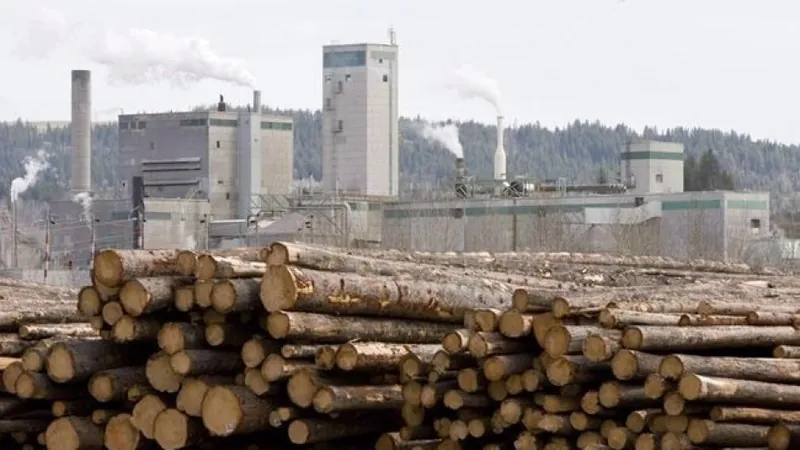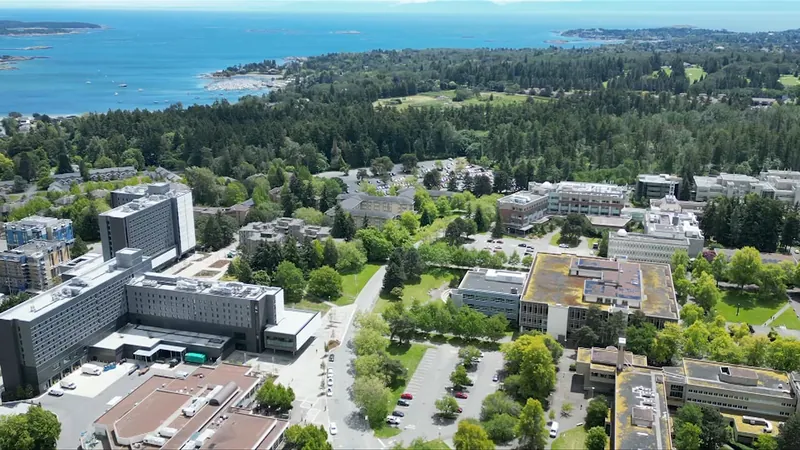
The Grim Future of B.C.'s Forestry Sector: A Perfect Storm of Challenges
2024-11-06
Author: Jacques
The Timber Industry's Decline
The timber industry in British Columbia, once celebrated as North America’s forestry titan, now faces an increasingly bleak future. Plummeting lumber prices, exacerbated by a host of economic and environmental challenges, are setting the stage for a crisis in one of Canada’s major resource sectors.
Economic Challenges
Currently, lumber prices across North America are languishing below the break-even point for numerous sawmills. Inflation and high-interest rates have severely stifled home construction, leading to a dramatic drop in demand for lumber. Reports from Natural Resources Canada reveal that the average price for Western SPF (spruce-pine-fir) plummeted to under US$400 per thousand board feet, a staggering decline from the record high of US$1,600 per thousand board feet experienced in 2021.
Price Trends and Outlook
In a recent quarterly outlook, Global Consulting Alliance noted, "Through the first two weeks of July, prices have continued to move lower where almost all ‘average’ or typical sawmills in North America are at or below break-even costs." However, a slight fillip of optimism was offered: lumber prices may have hit rock bottom and are beginning to rise. While this may benefit some mills, especially in the southern U.S., producers in B.C. still find themselves trapped in a high-cost environment.
Production Statistics
Despite the volume of lumber production in Canada seeing a 4.4% uptick in the first seven months of 2024 compared to the previous year, B.C.'s output has dropped by 2.8%. This declining availability of timber has led many sawmills to close their doors, with over a dozen mills shuttered in just the last four years. The capital has started fleeing to the U.S., where major Canadian forestry firms, like Canfor and West Fraser Timber, are acquiring a growing number of sawmills across the border.
Environmental and Regulatory Challenges
Adding to the woes is the hangover from the pine beetle infestation that ravaged British Columbia’s forests two decades ago, alongside stringent government regulations that have further restricted access to timber supply. Rob Schuetz, president of Industrial Forest Services, highlighted at the recent Global Wood Summit that the annual allowable cut (AAC) has increasingly become unattainable due to policy changes. Under the current regulations, the cut has fallen from 95% in the 1990s to less than 50% since the B.C. NDP took power in 2017.
Impact of New Regulations
This decline in harvesting can be traced back to a plethora of new regulations aimed at ecological protection, including old growth harvesting moratoriums, extensive forest management plans, and enhanced collaboration with First Nations. The closure of 16 sawmills, three pulp mills, and four paper mills is just one consequence of these shifts.
Federal Protections and Company Responses
Federal caribou protection measures further complicate matters as they restrict available timber resources, impacting operations. Companies like Canfor have been proactive, closing facilities in anticipation of these regulations, as evident from their preemptive shutdown in Chetwynd.
The Future of B.C. Forestry Producers
Despite a potential lumber price rebound, experts believe that B.C. forestry producers are unlikely to benefit meaningfully due to ongoing economic constraints. For more than a decade, B.C. forestry firms have strategically shifted their investments to the U.S. to navigate softwood lumber tariffs and take advantage of a more favorable timber supply situation.
Comparative Sustainability of Timber Production
The sustainability of timber production in the southern U.S. is notably robust, with coastal southern yellow pine boasting shorter growth cycles of 20 to 30 years compared to the 60 to 80-year rotations of B.C. forestry species. Amanda Lang, COO of Forisk Consulting, added, "The growth-to-drain ratio in the U.S. south is now 1.4, indicating that forests are increasingly outpacing harvesting needs."
Conclusion
The grim reality is that the forestry sector in British Columbia is grappling with a perfect storm of economic and regulatory challenges, raising urgent questions about its future viability and sustainability. What will it take to revive this once-thriving industry? The race against time is on, and the implications stretch far beyond the logging camps of B.C.









 Brasil (PT)
Brasil (PT)
 Canada (EN)
Canada (EN)
 Chile (ES)
Chile (ES)
 España (ES)
España (ES)
 France (FR)
France (FR)
 Hong Kong (EN)
Hong Kong (EN)
 Italia (IT)
Italia (IT)
 日本 (JA)
日本 (JA)
 Magyarország (HU)
Magyarország (HU)
 Norge (NO)
Norge (NO)
 Polska (PL)
Polska (PL)
 Schweiz (DE)
Schweiz (DE)
 Singapore (EN)
Singapore (EN)
 Sverige (SV)
Sverige (SV)
 Suomi (FI)
Suomi (FI)
 Türkiye (TR)
Türkiye (TR)